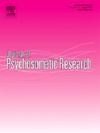The association of psychosocial factors with willingness to use smartwatch-based out-of-hospital cardiac arrest detection in the general population
IF 3.3
2区 医学
Q2 PSYCHIATRY
引用次数: 0
Abstract
Objective
Wearable-based technology could provide a feasible solution for early recognition of out-of-hospital cardiac arrest (OHCA). The current study investigates the role of demographic and psychological factors towards willingness to use smartwatch-based OHCA detection in the general population.
Methods
Data were obtained from a Dutch community-based sample (N = 598; mean age = 48.3 (SD = 16.7) years, 51.5 % women). Willingness to use smartwatch-based OHCA detection was assessed with two specifically designed Likert-scale questions. Reasons for and against using the smartwatch were explored using qualitative thematic analysis of open-ended question answers.
Results
The mean willingness to use smartwatch-based OHCA detection was moderately high (M = 3.54, SD = 1.06; range 1–5). Men (Cohen's d = 0.19, p = .018) and current health technology users (Cohen's d = 0.26, p = .004) reported a higher willingness. Regression analyses indicated that younger age (β = −0.165, p < .001) and a higher willingness to share health-related data (β = 0.298, p < .001) were associated with willingness to use this technology. There were no associations with the presence of cardiovascular disease, perceived OHCA risk or psychological factors. Qualitatively assessed benefits included a higher chance of survival and generally feeling safer, while reasons against included the absence of necessity, stress, privacy and financial barriers.
Conclusion
Demographics and technological experience were associated with willingness to use smartwatch-based OHCA detection. Qualitative analyses indicate a potential role for psychological factors. Further studies are needed with real-life prototypes among cardiac patients at risk of OHCA.
心理社会因素与一般人群使用基于智能手表的院外心脏骤停检测意愿的关系
目的基于可穿戴技术为院外心脏骤停(OHCA)的早期识别提供可行的解决方案。目前的研究调查了人口统计学和心理因素对普通人群使用基于智能手表的OHCA检测意愿的作用。方法数据来自荷兰社区样本(N = 598;平均年龄(SD = 16.7) = 48.3年,51.5%的女性)。使用基于智能手表的OHCA检测的意愿通过两个专门设计的李克特量表问题进行评估。使用开放式问题答案的定性主题分析探讨了使用智能手表的原因和反对原因。结果使用基于智能手表的OHCA检测的平均意愿较高(M = 3.54, SD = 1.06;范围1 - 5)。男性(Cohen’s d = 0.19, p = 0.018)和目前的健康技术使用者(Cohen’s d = 0.26, p = 0.004)报告了更高的意愿。回归分析表明,年龄越小(β = - 0.165, p <;.001)和更高的分享健康相关数据的意愿(β = 0.298, p <;.001)与使用该技术的意愿相关。与心血管疾病的存在、感知到的OHCA风险或心理因素无关。定性评估的好处包括更高的生存机会和总体感觉更安全,而反对的原因包括没有必要、压力、隐私和经济障碍。结论人口统计学和技术经验与使用基于智能手表的OHCA检测的意愿相关。定性分析表明心理因素可能起作用。需要对有OHCA风险的心脏病患者进行进一步的研究。
本文章由计算机程序翻译,如有差异,请以英文原文为准。
求助全文
约1分钟内获得全文
求助全文
来源期刊
CiteScore
7.40
自引率
6.40%
发文量
314
审稿时长
6.2 weeks
期刊介绍:
The Journal of Psychosomatic Research is a multidisciplinary research journal covering all aspects of the relationships between psychology and medicine. The scope is broad and ranges from basic human biological and psychological research to evaluations of treatment and services. Papers will normally be concerned with illness or patients rather than studies of healthy populations. Studies concerning special populations, such as the elderly and children and adolescents, are welcome. In addition to peer-reviewed original papers, the journal publishes editorials, reviews, and other papers related to the journal''s aims.

 求助内容:
求助内容: 应助结果提醒方式:
应助结果提醒方式:


